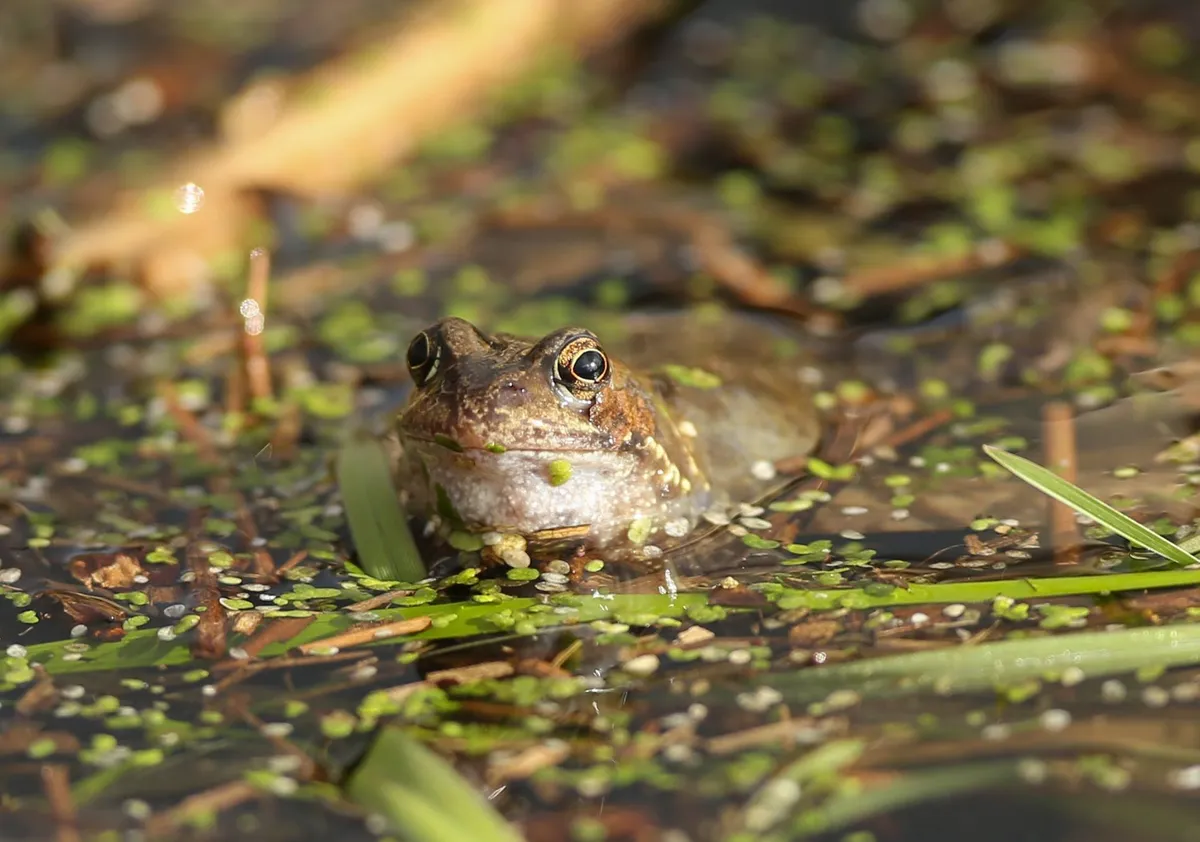Climate change has already increased the spread and severity of a fatal disease caused by Ranavirus that infects common frogs, Rana temporaria, in the UK.
Historic trends in mass-mortality events attributed to the disease were found to match the pattern of increased temperatures recorded over recent decades.
Disease outbreaks are predicted to become more severe, more widespread and occur over more of the year in coming decades if current carbon emission rates continue.
The research conducted by the Zoological Society of London (ZSL), University College London, the Queen Mary University of London and the University of Plymouth used cell cultures, live models and historic data from the Met Office and Froglife’s Frog Mortality Project.
Together, they demonstrated that warm weather, where temperatures reach 16°C, dramatically increases the risk of Ranavirus causing a disease outbreak in common frogs.
“Climate change isn’t something that’s just happening in faraway places – it’s something real and present that’s already had hard-to-predict impacts on wildlife in our own back gardens,” says Dr Stephen Price, lead author of the study.
“This is one of the first studies that provides strong evidence of the impact of climate change on wildlife disease, and helps to explain how it may facilitate the spread of Ranavirus across the UK.”

The findings help explain the seasonality of the disease, with incidence peaking during the hottest months of the summer, showing that climate change could see outbreaks becoming more frequent from April to October.
Disease outbreaks in the spring could result in the deaths of large numbers of tadpoles, which could have repercussions for population survival.
Currently the disease is restricted to England, however, with increasing temperatures in more areas, it is likely to spread to other countries in the UK.
ZSL scientists suggest that frogs may be better able to cope with infection if they have areas in which they can cool down – adding log piles, vegetation or nearby shady patches, as well as keeping ponds deep, will help reduce the level of sun exposure frogs receive, and thus reduce the growth rate of the virus.

“Many studies in amphibian disease cannot do much beyond saying ‘we have a problem’,” adds Prof Trenton of ZSL.
“This research offers a number of options for mitigation; however, this is only a short-term solution of course – if we don’t eventually slow and reverse human-driven climate change, we unfortunately can only expect things to get worse for our amphibians.”
Read the paper in Global Change Biology.
Main image: Common frog. © Greg Hitchcock